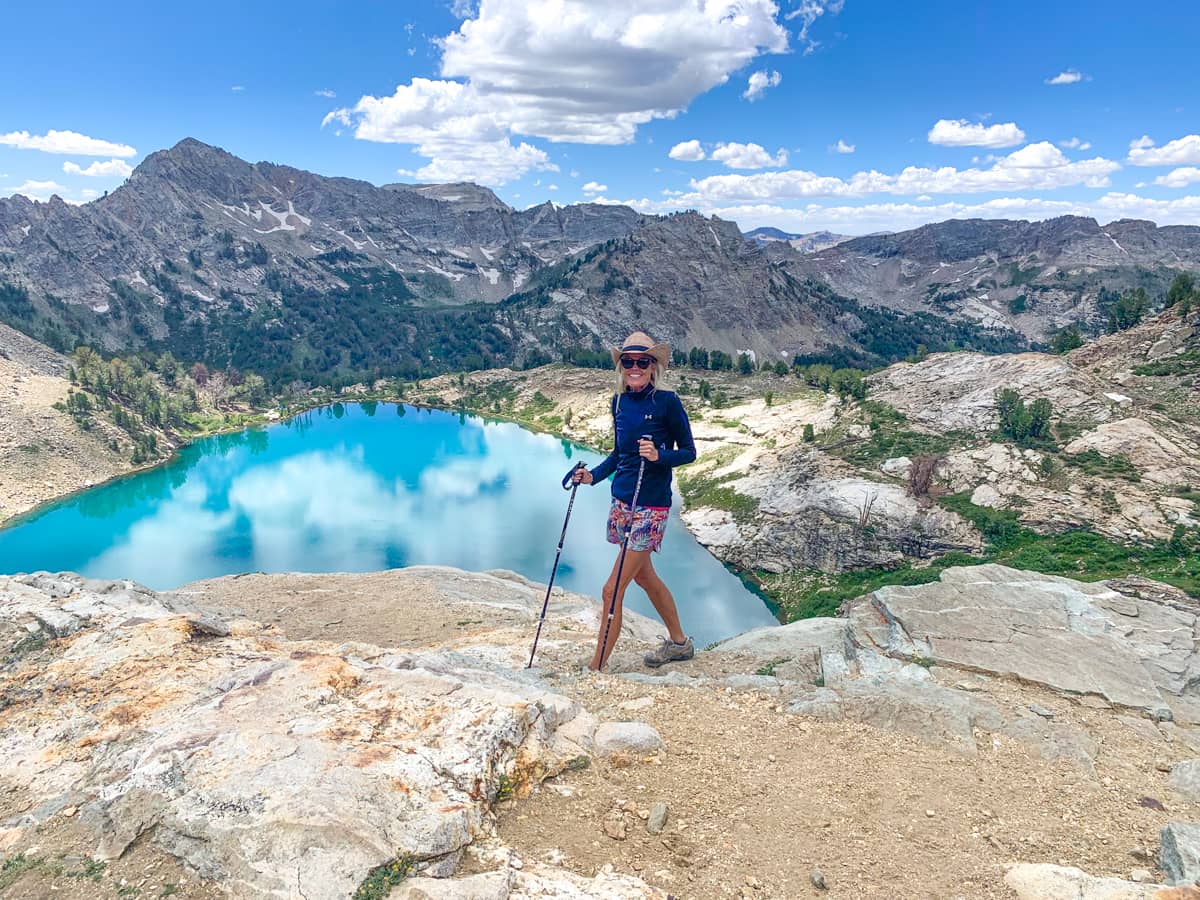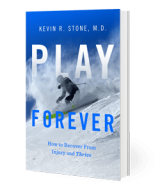High on Climbing
Climbers are packing their ropes and skiers are tuning their skis heading for the mountains – from the sheer cliffs and boulders of Yosemite Valley to the lofty peaks of the Himalayas. All of those climbing (and hiking) destinations have one thing in common: They are far above sea level.

This article is adapted from Dr. Stone's book Play Forever. Pictured above is articular cartilage knee repair and clavicle fracture repair patient Andrea "Andie" H hiking over Liberty Lake in the Ruby Mountains of Nevada at 10,000ft elevation.
Going to high elevations pushes all your cardiovascular systems to respond. With altitude, as the force of gravity declines, the partial pressure or density of the oxygen we breathe declines progressively. While the percentage of oxygen in each breath stays the same (21 percent), due to the lower pressure, the amount of oxygen available to the lungs at 5,000 meters drops by half. This means that the body is unable to access the amount of oxygen normally needed without dramatically increasing breathing, blood flow, and sometimes blood pressure. Relative hypoxia—lowered oxygen concentration in your blood—occurs when you cannot adapt fast enough to lower oxygen at partial pressure.
Certain behaviors inhibit your adaption mechanisms, smoking chief among them. Smoking brings carbon monoxide into the lungs, binding the hemoglobin that carries oxygen to tissues. Smoking three cigarettes effectively raises you to the equivalent of 1,500 meters of elevation. This makes you breathe harder to get enough oxygen. Not only that; in trying to conserve oxygenated blood for the brain, the cardiovascular system distributes blood away from the arms, legs, and other peripheral parts of the body. As a result, your muscles don’t work as well. And higher levels of carbon monoxide and hypoxia lower visual acuity immediately. You simply don’t see as accurately. Alcohol also shifts the dissociation curve of oxygen, making it less available to all tissue.
If you have heart disease, or arteries that are calcified or restricted by plaque deposition, your system may not be able to distend and contract effectively enough. If you have lung disease—or simply a cold—your ability to expand your lungs and fill their small alveolar spaces with fresh air may be restricted. Clearing the lungs before going to altitude helps, if possible. Once there, the use of inhalers, nasal washes, and decongestants can improve your reactivity to altitude stress.
But you have to pay attention to more than just the oxygen concentration. Dry air at altitude dehydrates everyone and few low-landers remember to hydrate as much as they need to. All the cells in our bodies are affected negatively by dehydration and none are more sensitive than the brain. Water consumption—as much as eight glasses a day—makes a huge difference in how you think and how you perform at altitude.
Abrupt weather changes at altitude trap many an unsuspecting visitor. Getting wet from light rain (or even from sweating) just before the temperature plummets has led to hypothermia in athletes across all sports. Extra layers of clothing and accurate weather reporting are the best preparation for the arrival of sudden afternoon cold fronts.
Despite all these potential problems, most people excel at altitude. There is something about the clean air and majestic mountains that frees the spirit from the constraints of everyday life. Changes in lighting, dramatic sunrises and sunsets, and the challenge of pushing oneself all merge into an unmatched beauty of spirit, perception, and physicality. It is important to go up—to get high in the best possible way and carry that elevated state home with you.
You may find more sporting inspiration in Dr. Stone’s new book Play Forever: How to Recover from Injury and Thrive, on Amazon now.

